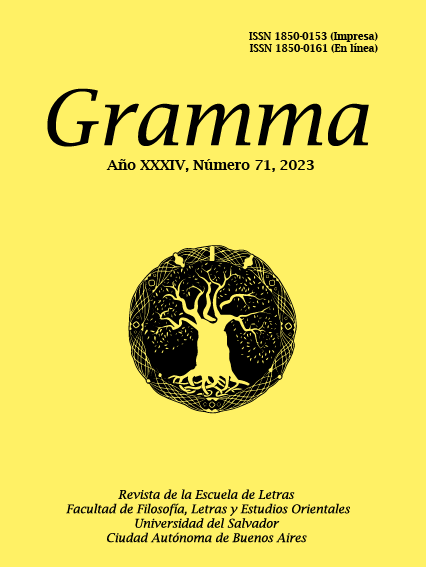Frontiers of terror and horror in contemporany Argentine narrative: a reading of “Huérfanos” (2021), by María Rosa Lojo
Keywords:
contemporary Argentinian narrative, María Rosa Lojo, Así los trata la muerte, Dominguito Sarmiento, Vicky Walsh, Horror in literature, terror, Argentine dictatorshipAbstract
The idea that violence defines Argentine History is common. Consequently, its literature also stands on this basis. María Rosa Lojo (1954), Argentine daughter of Spanish exiled after the Civil War, has been producing in recent decades a solidand vast work, mixing history and fiction, in which she proposes to build a mural of history of her country giving a voice especially to the marginalized, preferred victims of that history constructed of horror and violence. The book "Así los trata la muerte. Voces desde el cementerio de la Recoleta" (2021) brings stories that deal with characters from Argentine history buried in the Recoleta Cemetery, from 1858 to 1981. Their ultra-grave conversations cover practically the entire history of the country, that is, the long chronicle of horrors that constitutes it. The fact that these voices come from the world of the dead allows the work to be placed in an unusual genre, in which terror/horror, the magical and the fantastic are mixed. For this paper, however, we will take the thematic elements dealing with the terror/horror of state oppression and the stupidity of war. We propose a reading of thestory “Huérfanos”, which presents two young people eliminated by violence: Dominguito Sarmiento (1845-1866), in the Paraguayan War, and Vicky Walsh (1950-1976), in conflict with the last civic-military dictatorship. In their conversation they discuss the power and the control mechanisms used by that power.Downloads
Published
How to Cite
Issue
Section
License
Works published in this journal are licensed under a Creative Commons Attribution-NonCommercial-
Works published under this licence may be shared, copied and redistributed in any medium or format. Adaptation, remixing, transformation and creation are also authorised. Both sharing and adapting are permitted as long as credit is given to the work appropriately, providing a link to the licence and indicating whether changes have been made. Commercial use of the material is also not possible.








